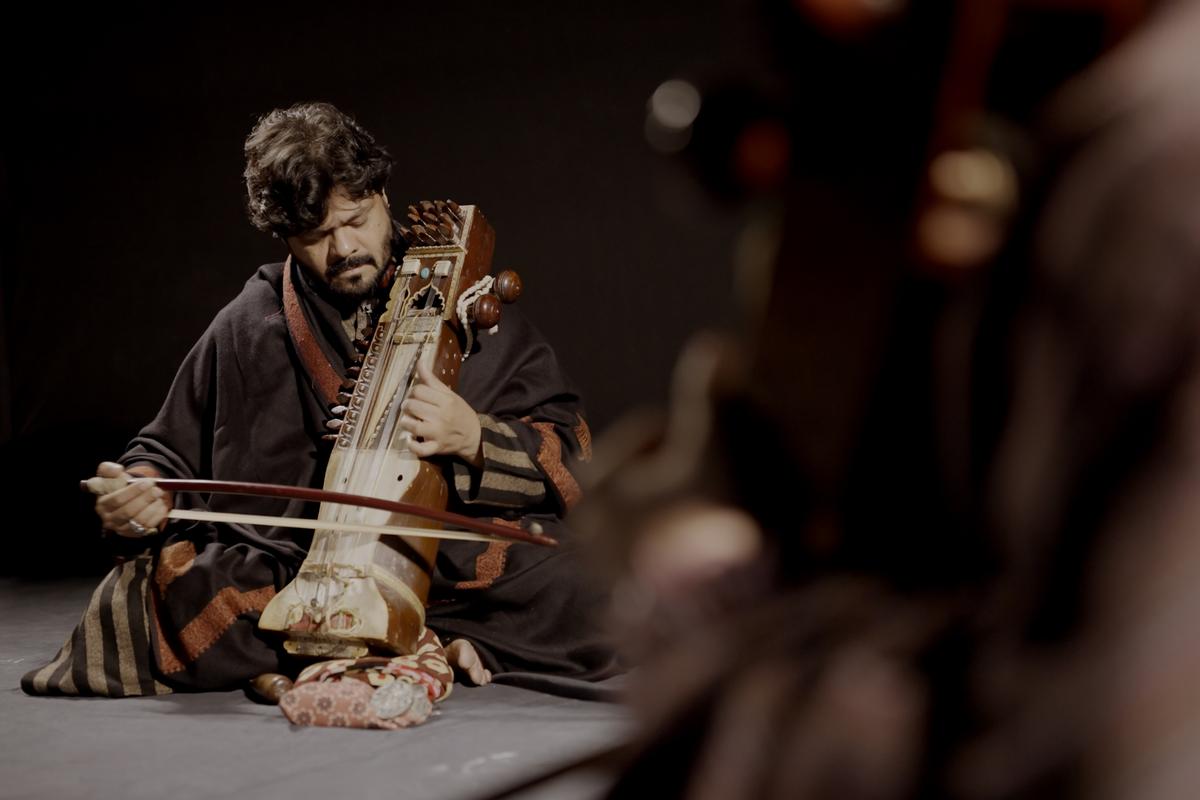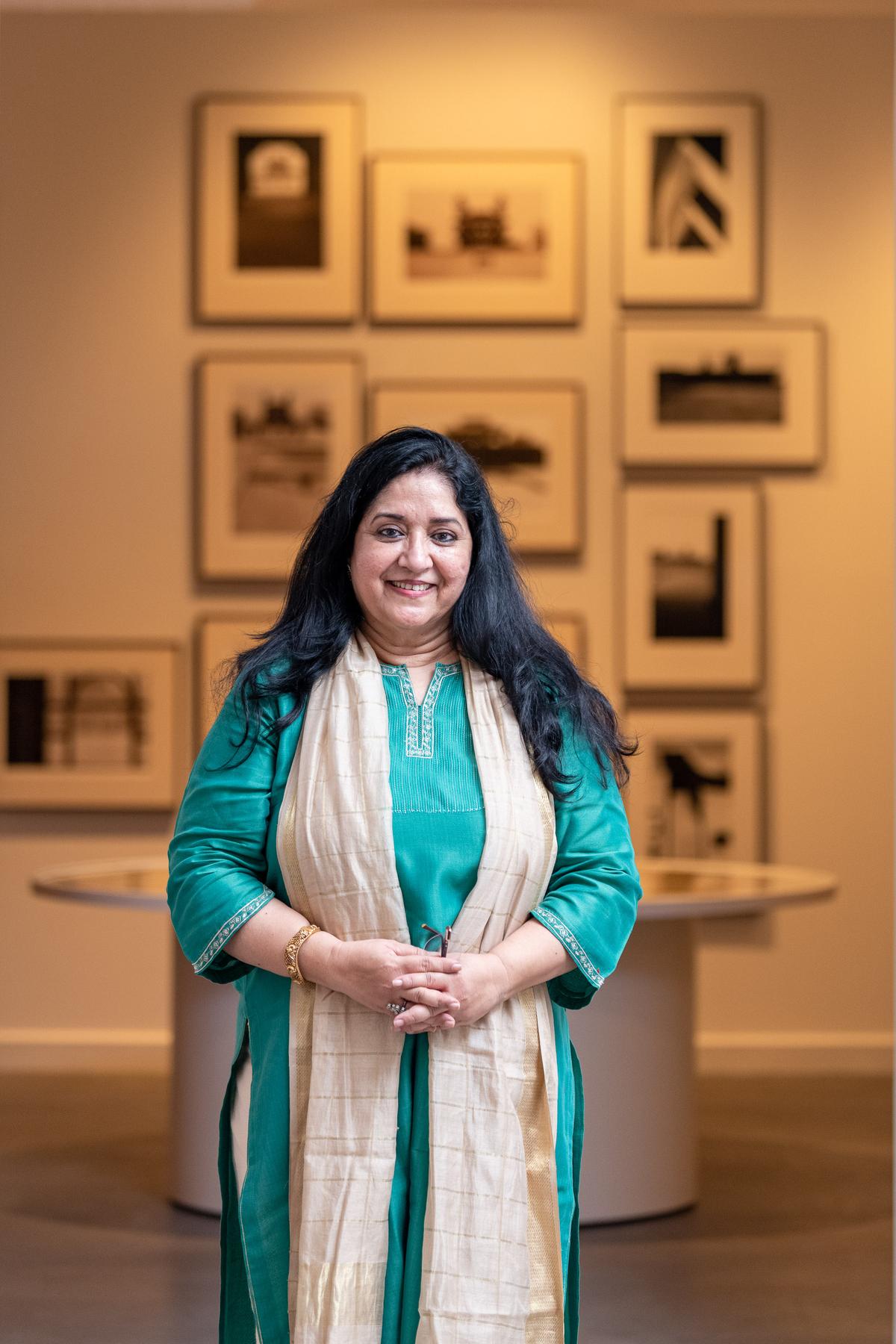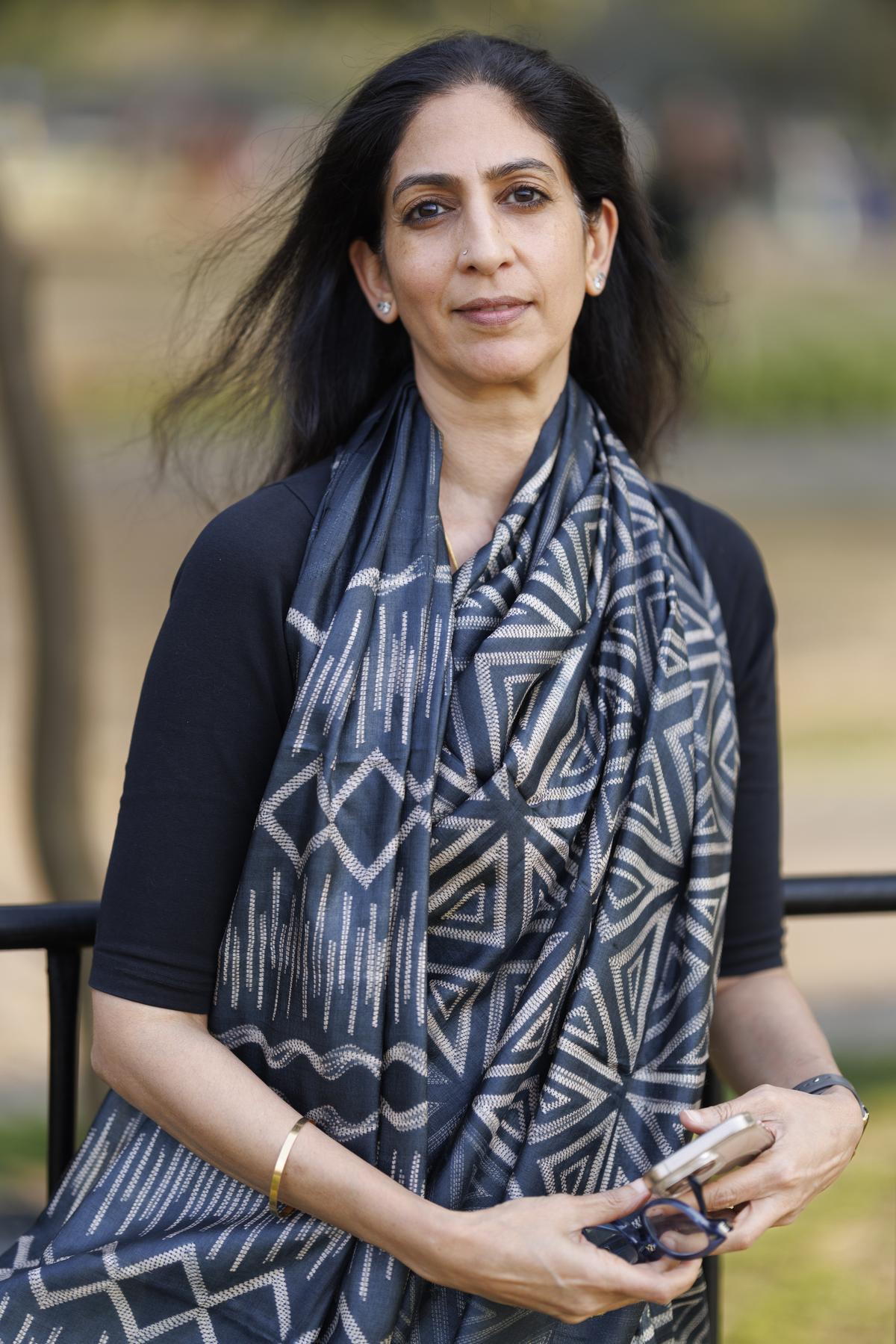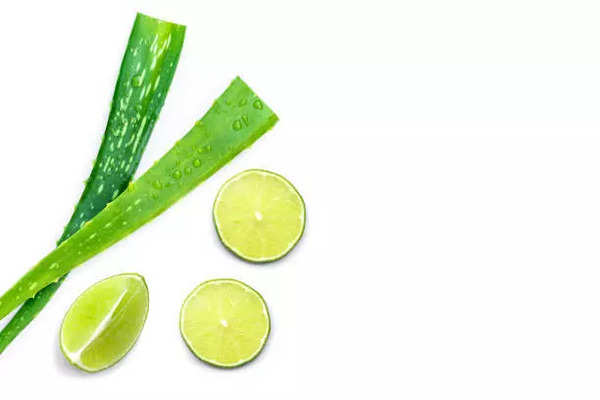Living rooms have evolved into more than just gathering spaces. With furniture taking centrestage, the arrangement of the same is a perfect way for you to convey your style. As we explored Design Mumbai and Design Delhi, we identified key trends that will transform interiors in the coming year.
1. The curved sofa
Soft curves remain dominant, and the curved sofa continues to be a top choice for 2025. This inviting silhouette introduces fluidity and warmth, fostering a cozy and intimate ambience. Standout pieces include Portuguese brand Gansk’s Nuance, Italy-based Secolo’s Tateyama, and Spanish brand Moanne’s Melancolia.
The structure of Nuance is made of resin reinforced with fibreglass. This modern sofa with premium fabric upholstery is a perfect choice for both residential and commercial projects.
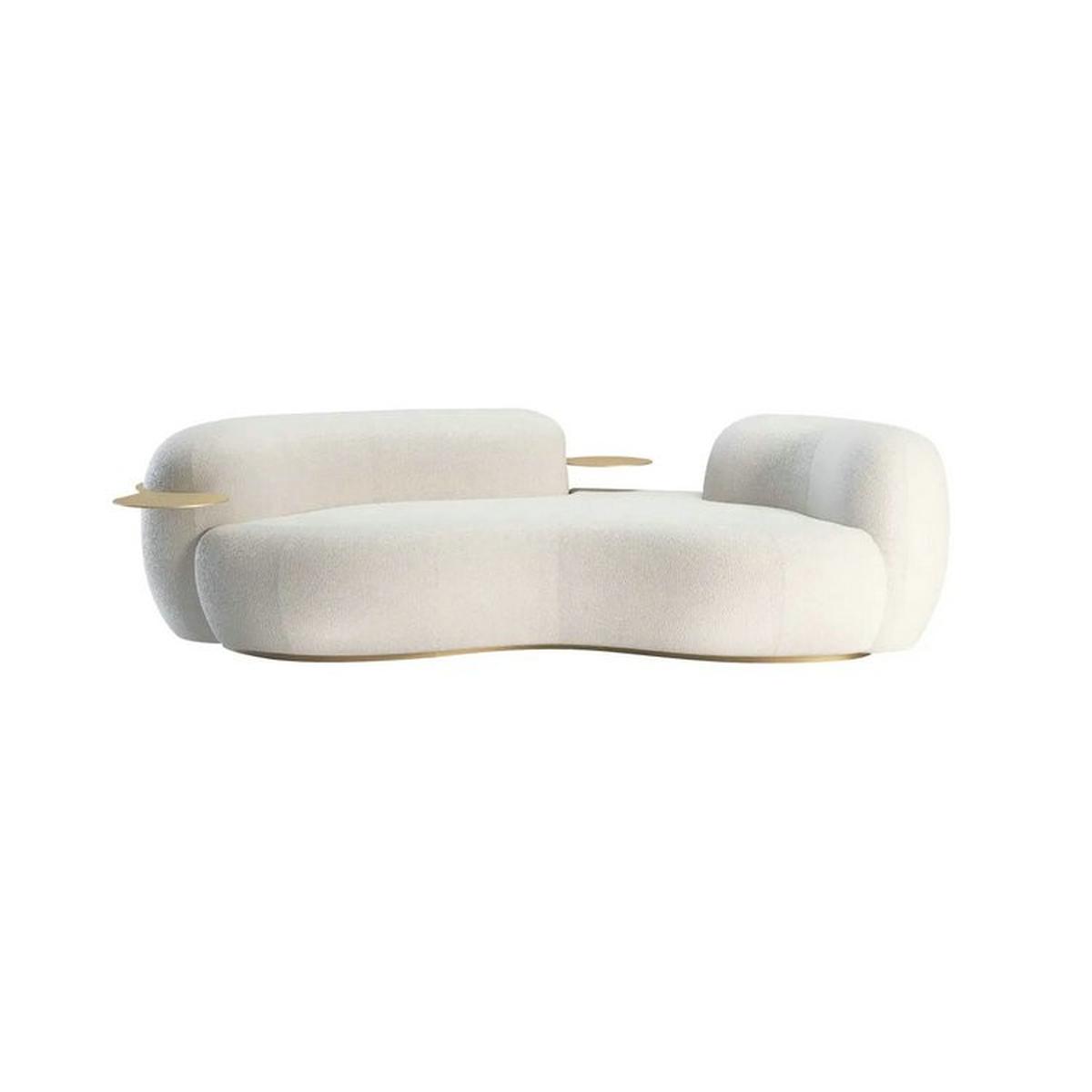
Secola’s Tateyama
Tateyama, a conversational sofa, sports soft curves and an unusual shape that is welcoming and comfortable. A gap carved out of the backrest opens the sofa up to the rest of the room. It is textured in wood stain and metal finish.
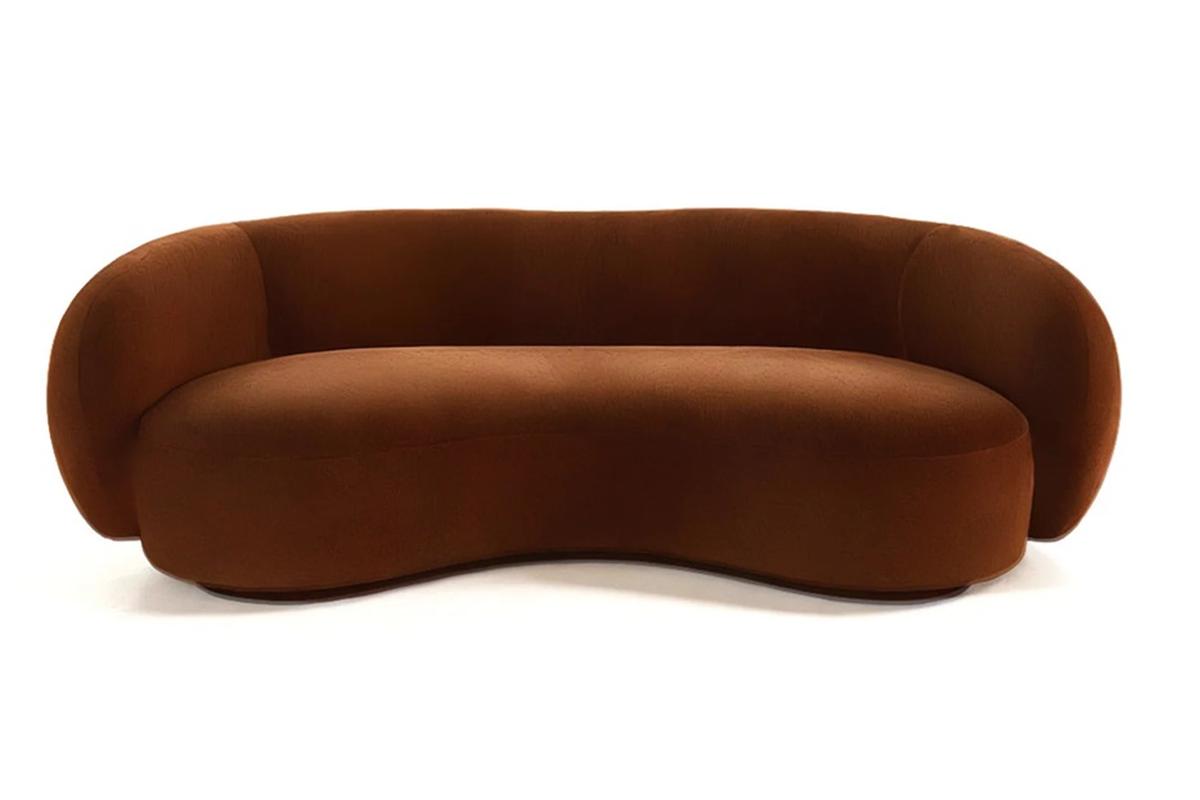
Moanne’s Melancholia
Melancolìa is a three-seater velvet sofa with an enveloping, organic design. Handmade to order, it is fully customisable.
If curves aren’t your style, consider a chunky-arm sofa like the Quilton by Denmark design company Hay or Supermoon by Italian brand Minotti for a modern touch. These organic shapes soften rigid lines and create a welcoming, contemporary aesthetic.
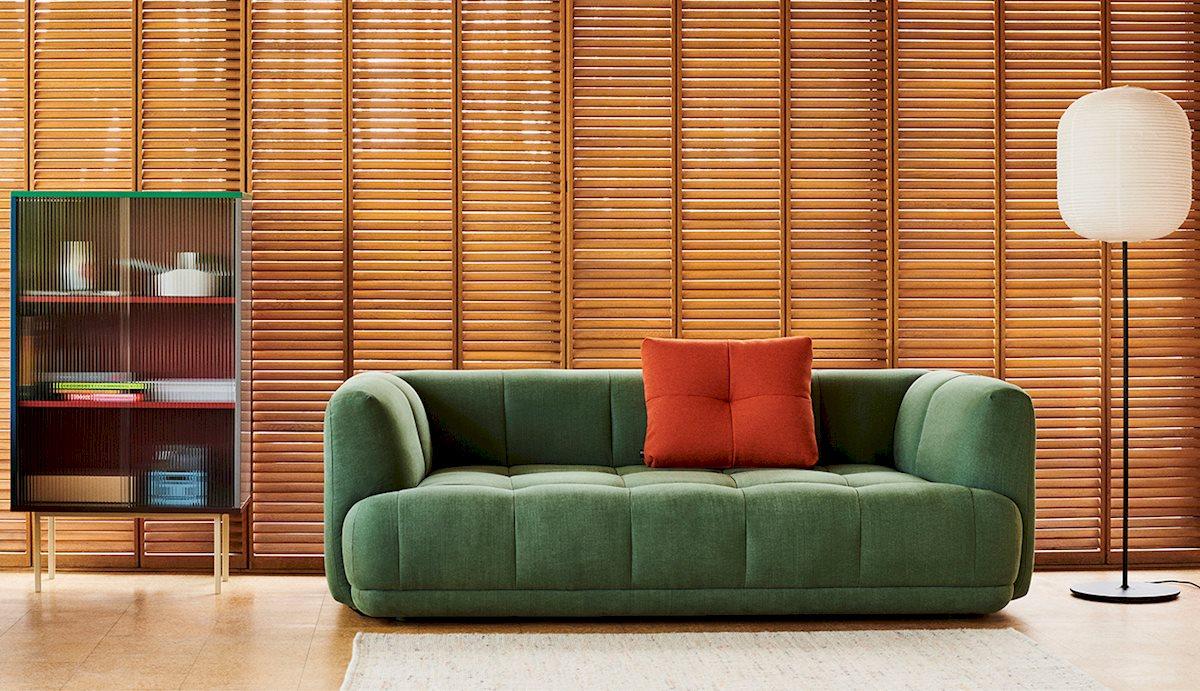
Quilton by Hay
Described by designers as a ‘quilted landscape sofa system’, Quilton serves as a central platform for living, working, socialising and relaxing. Offering a wide assortment of different modules, Doshi Levien’s multi-functional sofa provides the flexibility of a modular system with generous dimensions and sculpted forms. Its numerous upholstery choices include mono, duo, or with a black contrasting platform. The finely-detailed quilted upholstery encapsulates the softness and volume of the foam and wadding seats.
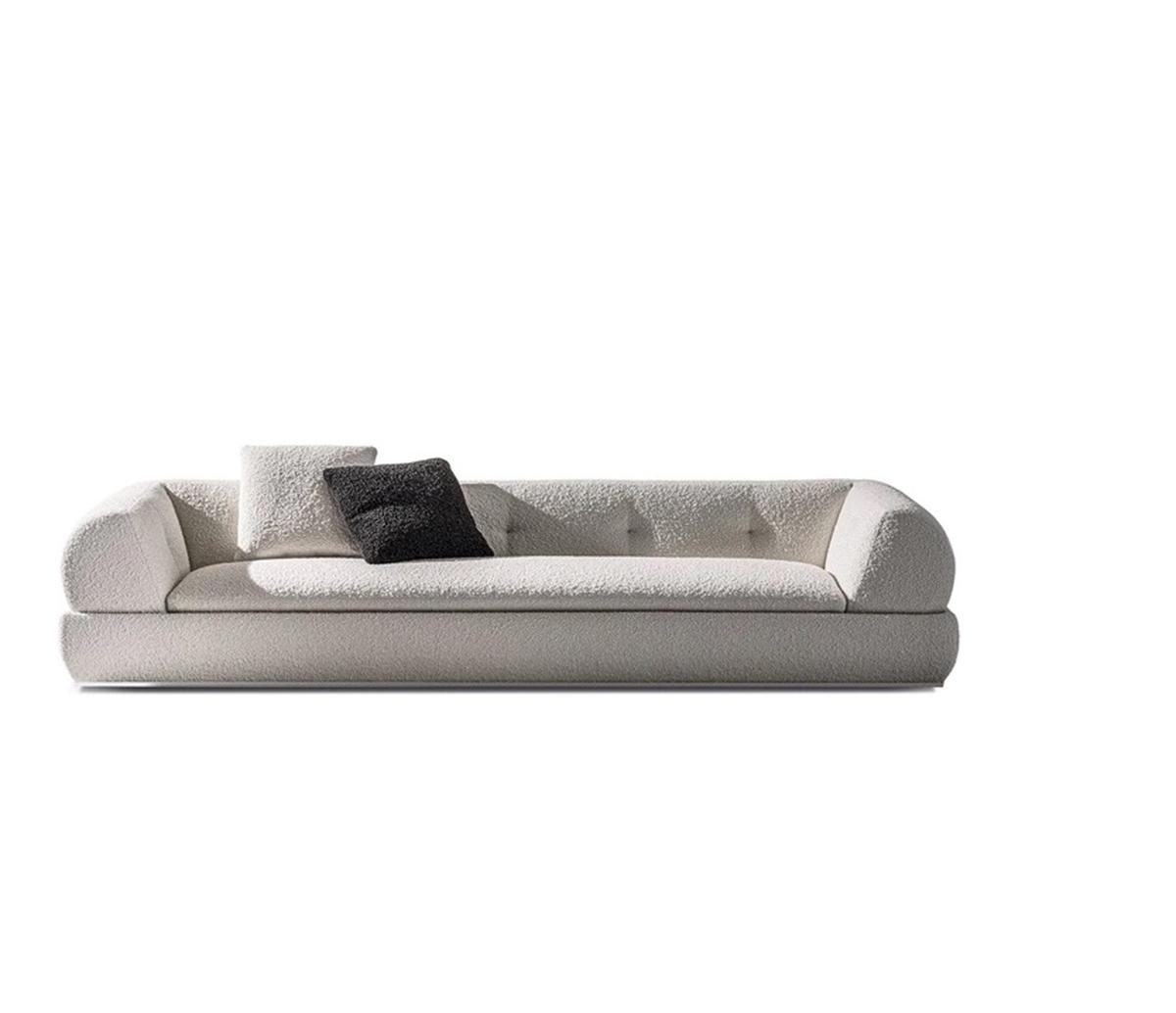
Supermoon by Minotti
Created as a standalone nomadic piece, Supermoon’s distinct 1970s style affords elegance and maximum comfort. Upholstered in fabric or leather, the sofa blends seamlessly with matching coffee tables, benches, and an armchair with a lacquered base from the same collection.
2. Swivel chairs
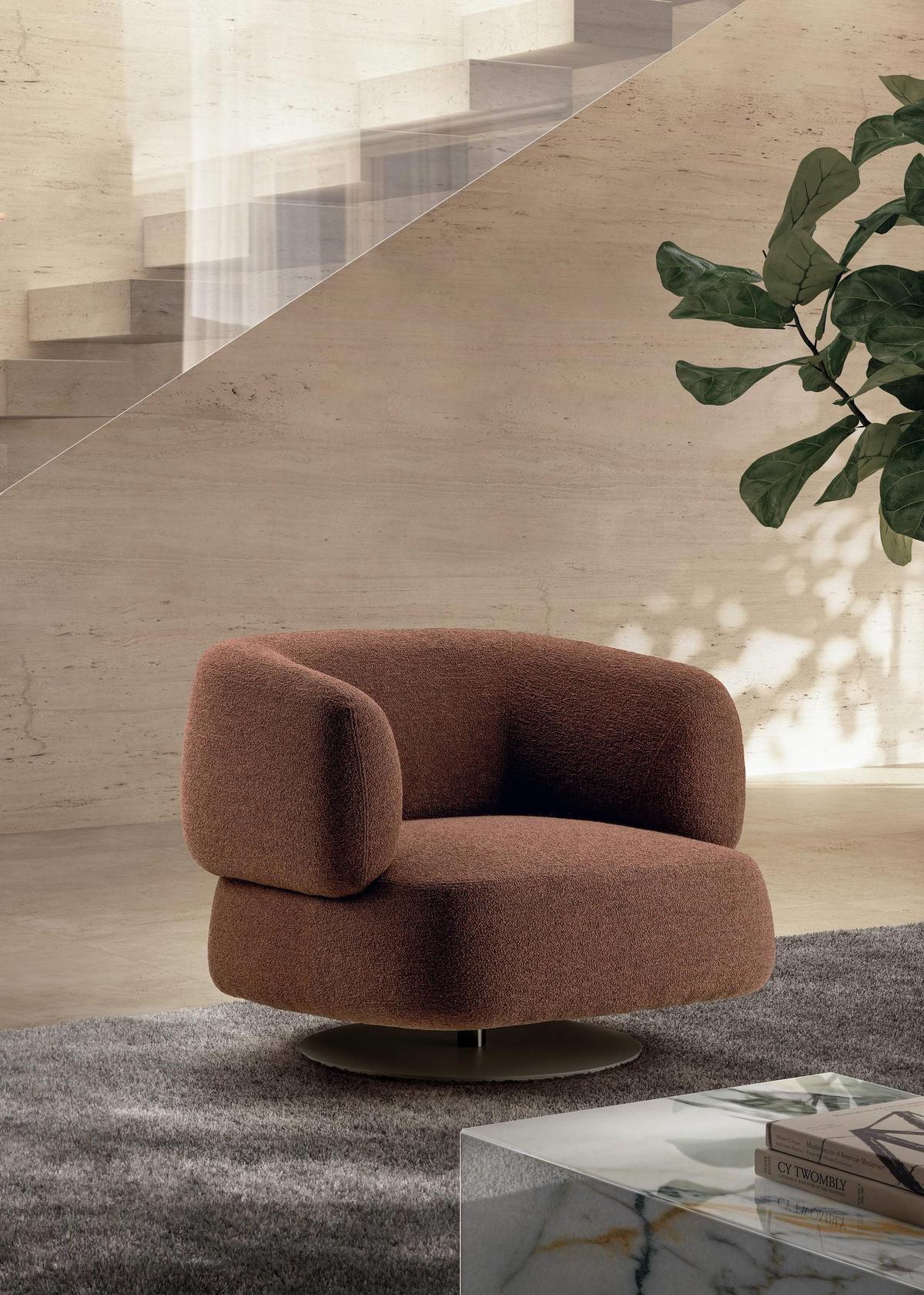
Lago by Zeppelin
Function meets style with the rise of swivel chairs — a trend set to dominate in 2025. These dynamic designs enhance interaction, making them ideal for living rooms, home offices, and bedrooms. Whether sleek and minimal or plush and luxurious, they add movement and versatility to any space. Our top picks? Lago by Italian furniture company Zeppelin for spacious interiors and Nebulona by Miniforms, another Italian brand, for a refined, compact option.
The dynamic Zeppelin chair has an ergonomic build and a spacious upper part that wraps around the seat, which rests on a swivel base with return mechanism. It is available in a wide choice of colours and textures from Frosty, Barkley, Barnum, to Panama Leather and Somme.
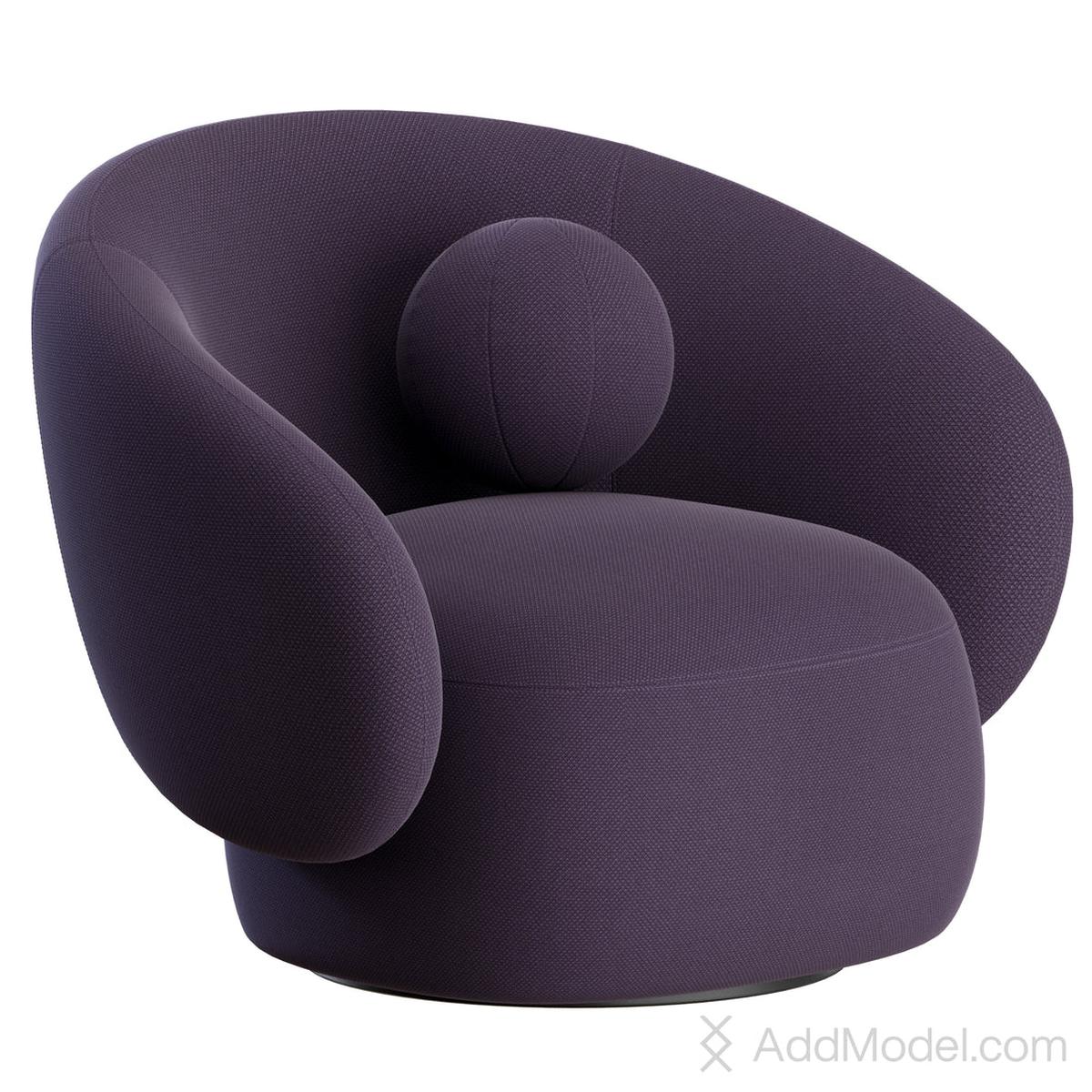
Nebulona by Miniforms
The distinctive drop-shaped armrests of Nebulona encompass a plump and curvaceous seat. It can be customised in over 20 textile finishes.
3. Sculptural coffee tables
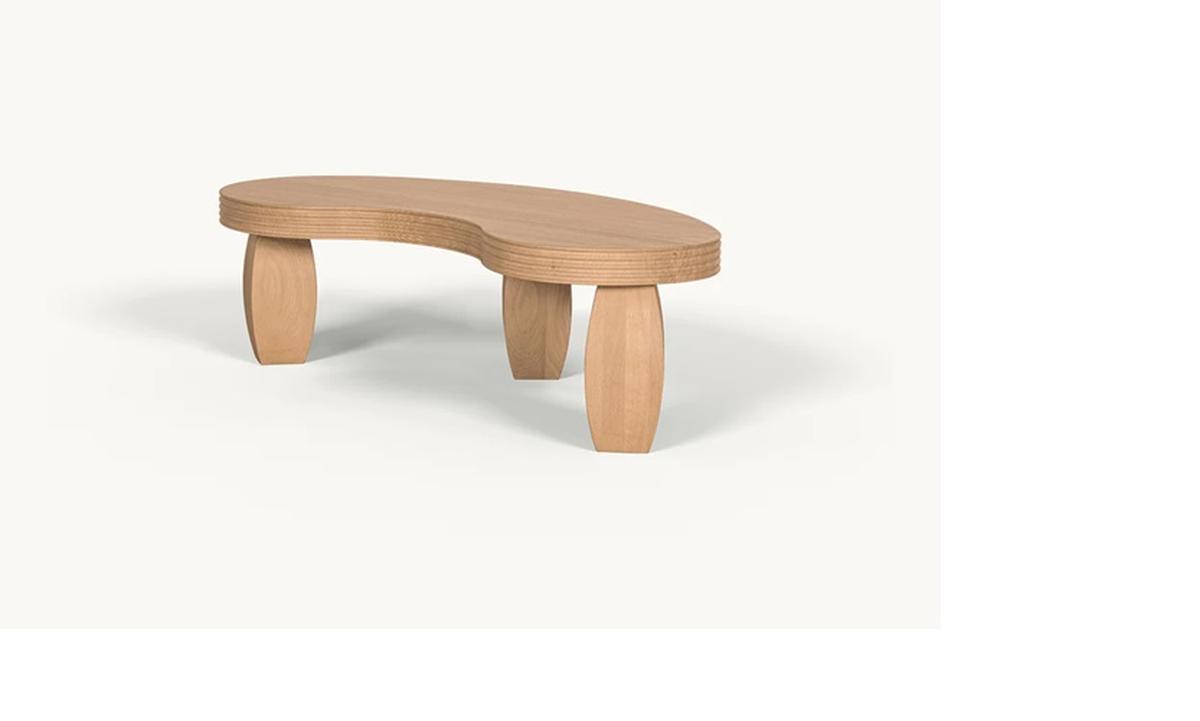
Pisces by Sixpenny
Coffee tables are evolving into statement pieces, blurring the line between function and art. Expect to see large, asymmetrical designs in natural stone, glass, and mixed metals. From kidney-shaped marble tables to handcrafted wooden masterpieces, these eye-catching designs elevate any space. One to watch: Pisces by New York-based Sixpenny, a true showstopper. Outlined by beautifully ribbed edges and a chunky leg, the flowing shape of Pisces can be paired with a twin table on the side. It is available in two finishes: buttery-blonde-coloured pale oak and smokey-paprika-toned spiced oak.
4. Oversized ottomans
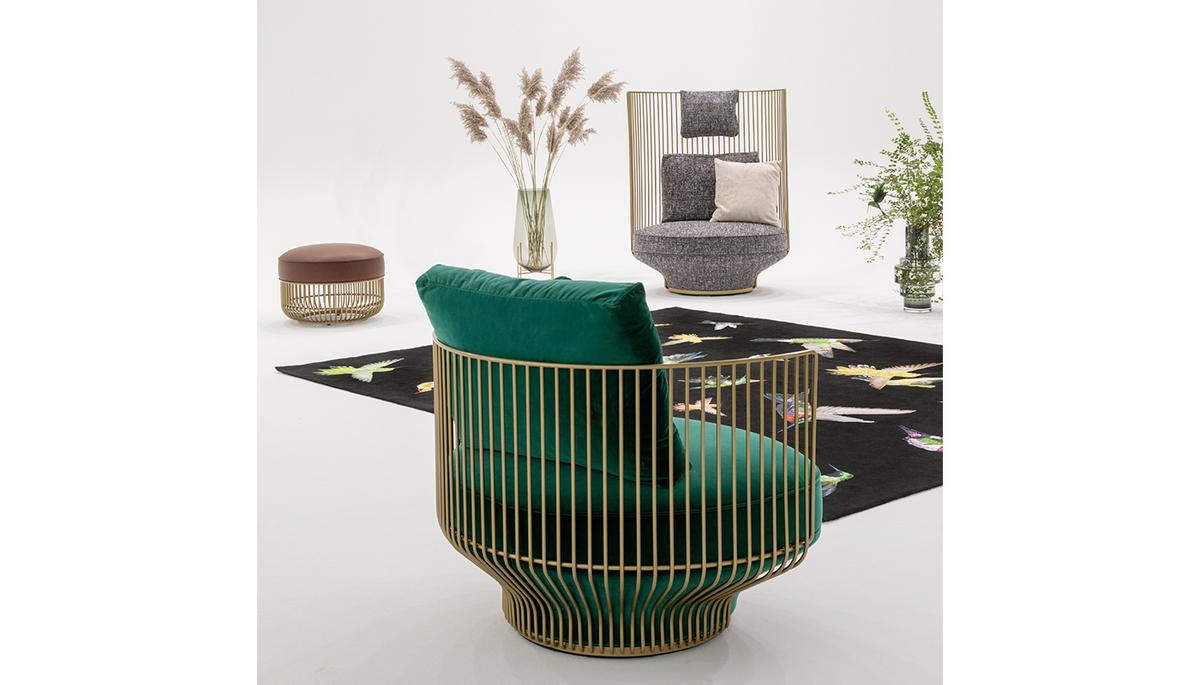
Paradise Bird ottoman by Wittmann
No longer just footrests, oversized ottomans are emerging as multifunctional centrepieces. Whether used as a coffee table, extra seating, or a design statement, they bring both style and practicality. Look for rounded, tufted designs in bold shades like emerald green, mustard, and terracotta. Paradise Bird by Austria-based Wittmann exemplifies this trend, making a bold yet harmonious impact. The ottoman, which is part of a visually striking collection of seating that includes a two-seat sofa, and a lounge chair in low and high versions, has a vertically-oriented metal base frame in two variants — satin brass or gray black finish. The product is available in a wide range of textile and leather upholstery options.
5. Tactile revolution
2025 is all about sensory design. Expect rich, textured fabrics — from chunky chenilles and shimmering velvets to inviting bouclés — bringing depth and dimension to interiors. This movement extends beyond upholstery, influencing cushions, poufs, and throws. Mixing textures, such as pairing a glossy velvet sofa with a textured chenille ottoman, creates a sophisticated and layered look.
6. Mocha chart
Colour plays a crucial role in 2025, with Pantone’s Mocha Mousse leading the way. This warm, coffee-inspired brown exudes comfort and elegance, serving as the perfect foundation for deep greens and blues — the standout shades of the year. The key to a refined palette? Layering rich tones while maintaining simplicity. From sculptural forms to tactile materials and nature-inspired hues, these elements will shape the way we experience our living spaces this year.
The writer is Director, Fern & Ade.
Published – April 04, 2025 03:26 pm IST
 We live in a world where most people pretend to be your well-wishers, but in reality they aren’t. They might be extremely sweet to you but only for their own hidden benefits, which might even harm you. So, here we list five ways you can spot such people and beware of them:
We live in a world where most people pretend to be your well-wishers, but in reality they aren’t. They might be extremely sweet to you but only for their own hidden benefits, which might even harm you. So, here we list five ways you can spot such people and beware of them:






